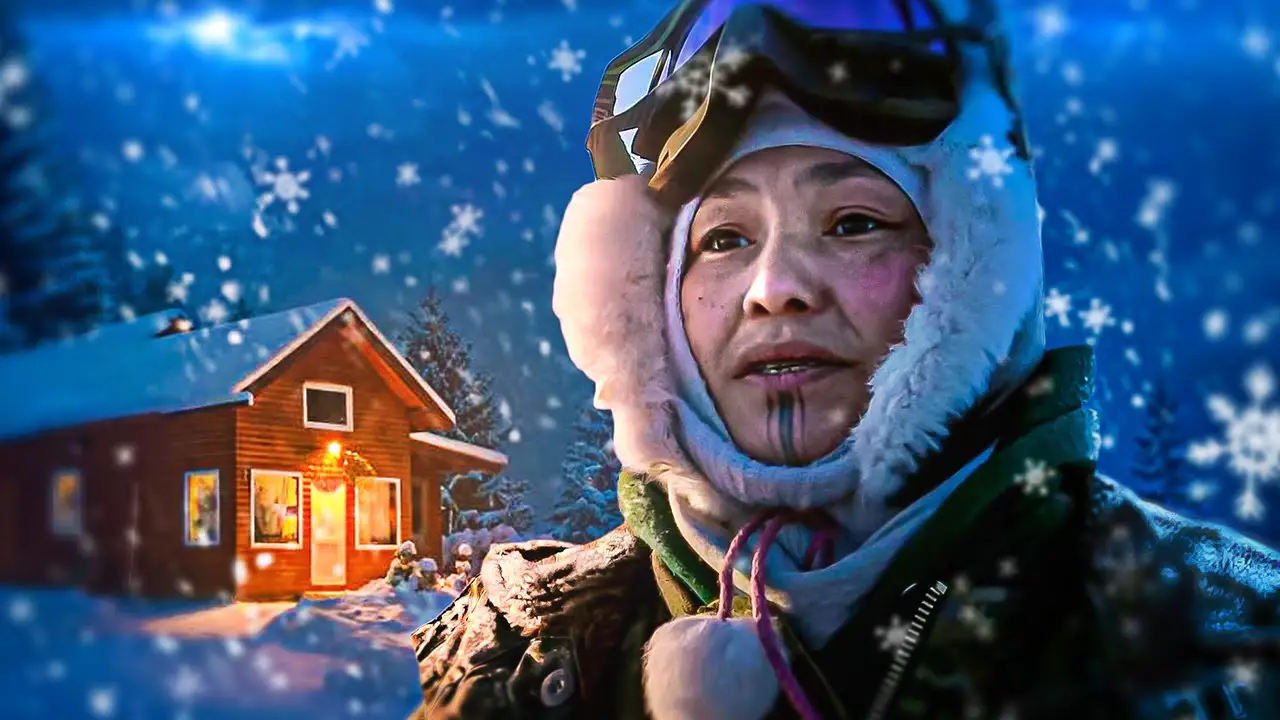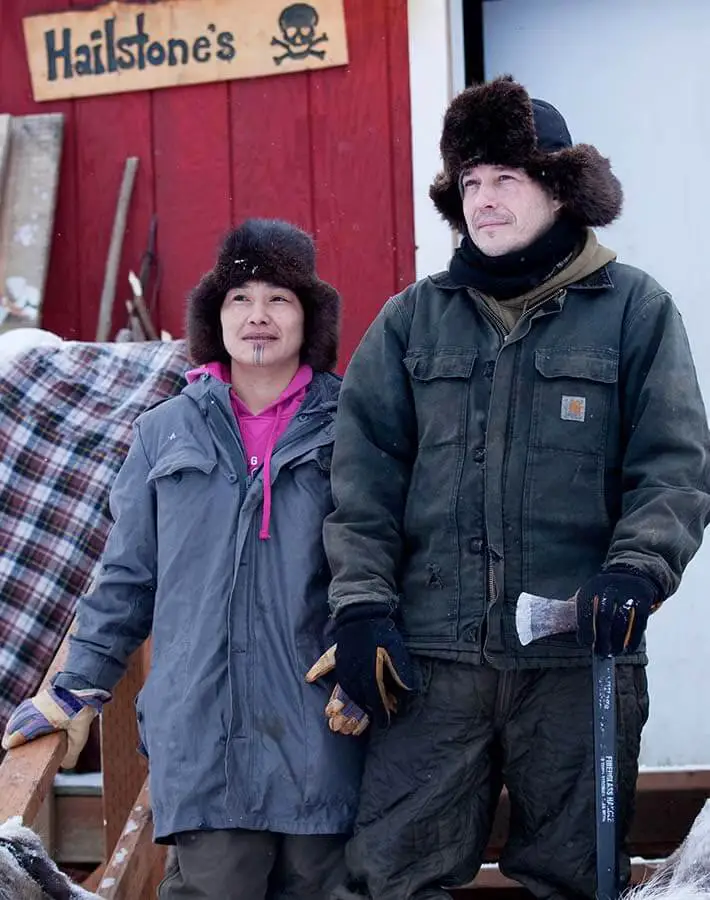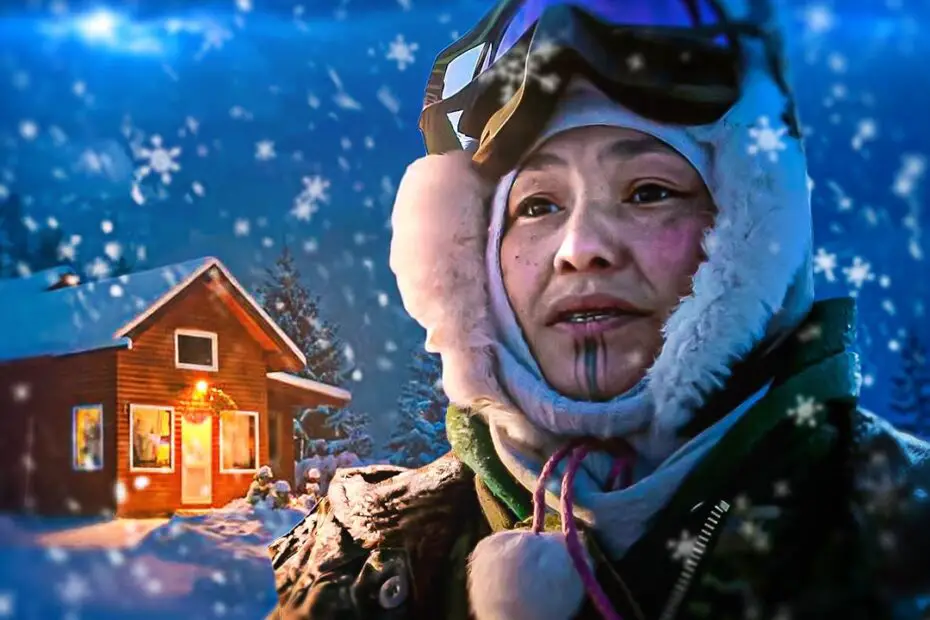Chip Hailstone, a well-known cast member of National Geographic’s Life Below Zero, has faced online accusations that he physically harmed his wife, Agnes Hailstone. Specifically, some viewers have speculated that the dark marks around Agnes’ eyes were bruises caused by domestic violence.

However, Chip has firmly denied these claims, explaining that the marks are actually frostbite, a common occurrence in the extreme cold of Alaska.
In response to the online accusations, Chip addressed the issue directly:
“Nope, no ‘black eyes’ on the ladies. Agnes and most everyone up this way has/gets frost bites.”
Chip emphasized that frostbite is a normal part of life in Alaska, particularly for those who spend long hours outdoors in freezing temperatures. Unlike Chip, who takes extra precautions to cover his face, Agnes does not. He explained that she has frostbite in the same places every year, especially in the spring when the 24-hour sun and snow reflection intensify the condition.
“I cover my face, but Agnes doesn’t care if/when she gets them. And that I’m constantly accused of the ‘black eyes’ on the internet, though locals are very familiar with it, as we all frostbite now and then. If you Google images and see, she has them in the same places every year and the last few years especially in spring, with 24-hour sun, they get extra dark.”
Understanding Frostbite and Life in Extreme Cold
Frostbite is a thermal injury that occurs when skin and underlying tissues freeze due to prolonged exposure to extreme cold. It commonly affects the face, hands, and feet—areas that are most exposed.
Chip explained that many people in Alaska, particularly native Eskimos, develop frostbite early in life and lose the ability to feel when their skin is freezing.
“Anyone who lives up this way knows them well. I didn’t grow up here, so I have sensitivity that people who have been previously frostbitten no longer have, and I care for myself constantly. It’s not easy to stay unfrozen when you’re outside at -30°F or lower for weeks at a time.”
Once someone gets frostbite, they may lose sensation in the affected area, making it difficult to detect future frostbite. Chip shared that this is a common issue among people who live in harsh Arctic conditions.
“Fact is, most people up this way have had the loss of sensations like that when they were kids playing outside at -40°F. My hands, fingers, and wrists are certainly like that and very, very thick.”
Springtime and Frostbite: A Hidden Danger

While winter brings subzero temperatures, springtime in Alaska poses an even greater risk for frostbite, as the snow reflects 24-hour sunlight, intensifying the exposure. According to Chip, Agnes’ frostbite worsens in the spring, making it look even darker than usual.
“With snow reflecting the 24-hour sunshine in spring, wearing sunglasses is mandatory, and her big cheeks often freeze to plastic rims. I get it on the bridge of my nose, but mostly on my hands, wrists, and fingers from working in the deep cold.”
Chip explained that Agnes’ frostbite is particularly visible because she does not take the same precautions that he does. While he senses the burning sensation of frostbite coming on and takes action to prevent it, Agnes and other lifelong Arctic residents do not feel it as intensely due to prior frostbite injuries.
“I feel the cold and can stop any frostbite I am getting, as I sense the burning sensation. Most Eskimos that work outside in winter have lost the feelings of frozen skin coming on. Once you get frostbite, you don’t feel the ones that come after.”
Debunking the Domestic Violence Accusations
Chip made it clear that the accusations of him harming his wife are completely false. The marks on Agnes’ face are simply a result of living in one of the coldest places on Earth, not abuse.
“Frostbites are thermal injuries to the skin and are exactly the same in looks and are treated just like a burn/sunburn.”
He also pointed out that eye-related injuries are common in the Arctic, with many people suffering from snow blindness, a painful condition caused by sunburn on the retinas due to excessive sunlight reflection off the snow.
“‘Snow blind’ is when your retinas get sunburned.”
